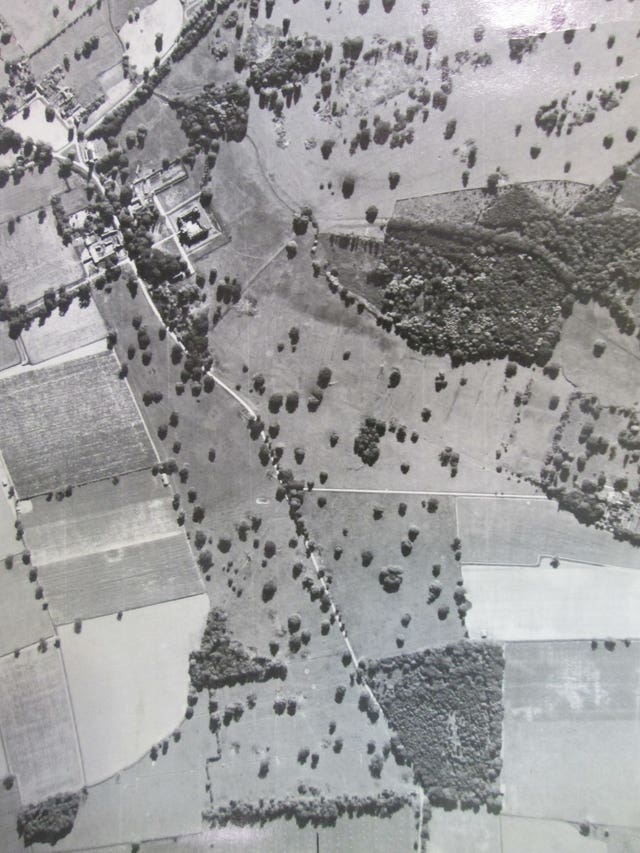
RAF aerial photographs taken in 1946 are helping to guide conservationists who are working to restore 19th-century parkland at a National Trust site.
The images show trees in the grounds of the 15th-century Oxburgh Hall in Norfolk, before the threatened parkland habitat was repurposed as arable farmland to help feed the nation following the Second World War.
The National Trust bought the moated manor house in 1951 to save it from demolition but was only able to buy a few acres of the wider estate at the time.
The charity acquired a further 125 acres in 2017 and work has begun to restore 175 of the original 400 acres of parkland habitat, aiming to attract more wildlife and increase biodiversity.

Conservationists, who are also using a Victorian Ordnance Survey map from 1904, will plant 227 trees including the rare black poplar, white willow and oak.
Ten remaining ancient trees will be incorporated back into the original design.
Conservationist and historian Dr Sarah Rutherford, who worked closely with the estate team to research the project, said the 1904 map showed how the landscape looked “when it was at its peak” and the 1946 photographs “clearly show numerous trees”.
“Fortunately, we have the sales details for the trees sold at auction (to be cut for timber) and we’re using this to identify the individual locations and species of trees for replanting after making some adjustments for the impacts of current challenges such as climate change and ash dieback where the historic species would no longer thrive,” she said.
The project is set to benefit wildlife, from the nationally scarce hornet moth to the lesser spotted woodpecker, and the wood pasture will create new roosting sites for bats.
Area ranger Tom Day, who is overseeing the project, said: “This area of the grade II-listed historic parkland can be seen from the hall and until a few years ago was the missing piece in the jigsaw puzzle.
“You can see from old maps, the landscape once looked very different to what it does today.”

He said ditches will be reprofiled and scrub, lowland meadows and ponds will be recreated.
Native rare breed cattle, such as red poll which originated in East Anglia, will be brought back to graze the land.
“Wood pasture is the closest habitat type to the original landscape that is thought to have covered most of Britain in the post-ice age – Neolithic period, and as such makes the perfect home for a variety of butterfly species from Brimstones to common blues, plus many species of native and migratory birds including meadow pipit, spotted flycatcher and garden warbler,” he said.
Russell Clement, general manager at Oxburgh Hall, said: “This project will root Oxburgh Hall back in the landscape once more and as well as creating habitats for nature to flourish and thrive.
“It’s humbling and a privilege to be part of a restoration which will still be in its infancy in my lifetime, knowing it will benefit people and nature for centuries to come.”
The £190,000 project is being funded by Natural England, Historic England and National Trust members and supporters.


Comments: Our rules
We want our comments to be a lively and valuable part of our community - a place where readers can debate and engage with the most important local issues. The ability to comment on our stories is a privilege, not a right, however, and that privilege may be withdrawn if it is abused or misused.
Please report any comments that break our rules.
Read the rules here